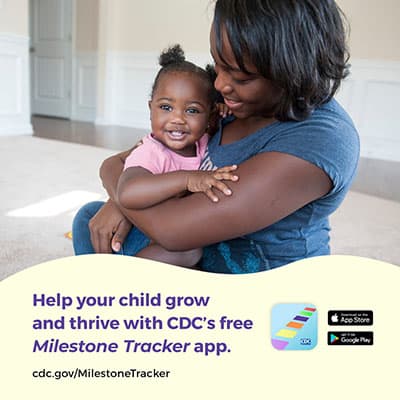by Elizabeth Malson
The Centers for Disease Control and Prevention (CDC) publishes developmental milestones. These milestones so that parents, nannies and pediatricians can better understand an individual child’s abilities and stay tuned to their developmental health. The developmental milestones are based on data, developmental resources, and clinical expertise. In February 2022, the CDC updated these milestones for the first time in 20 years.
Why Does CDC Publish Developmental Milestones?
Knowing a child’s developmental milestone status is very important. Pediatricians use the CDC checklist to document a child’s development during regular well-child visits. This help pediatricians know if an individual child is experiencing a lag in development. Early identification and intervention have been shown to improve outcomes. These milestones are not absolutes – every child develops at their own rate – but a child who falls behind may require intervention. According to the American Academy of Pediatrics (AAP), one in six children will experience developmental delays or disabilities.
If a child falls a little behind, it may not signify a problem. Many children fall slightly behind in some areas and then catch up. However, if a child can’t seem to catch up or falls way behind, it may be a sign that needs to be addressed. It may be an easy fix or something more serious. Your pediatrician is the expert and should be made aware of any concerns you may have. If there is a serious developmental delay, the earlier it is diagnosed, the earlier interventions and therapy can begin.
How were the Developmental Milestones Decided?
The CDC asked the AAP to gather a group of experts to review the most recent data and update and revise the developmental milestones. The CDC wanted criteria-based milestones representing the 75% percentile for each age group. They requested the addition of 15 month and 30 month checklists to better align the milestones with the pediatrician recommended well child visits. Once the checklists were created, they were presented to parents and caregivers from different racial groups, income levels and backgrounds to ensure the milestones were easy to understand.
Changes to the previous guidelines include the following:
- The new milestones are based on the premise that 75% or more of children can be expected to exhibit the age specific milestones.
- Checklists were added for 15 months and 30 months for consistency with pediatric well-child visits.
- Additional social and emotional milestones were added.
- Duplicate milestones and vague language (‘may’ or ‘begins’) were eliminated.
The new CDC and AAP guidance also provides open ended questions for the pediatrician to use in discussions with parents/caregivers. The milestones also provide a list of tips and activities that promote child development. These revised milestones are designed to give parents, nannies and pediatricians clearer benchmarks to make identification of developmental delays easier. Previously, the CDC had 216 milestones across 10 checklists. This revision adds 2 checklists (15 and 30 months) and cuts the final number down to 159 milestones.
The CDC website provides tools to help track a child’s development. There are checklists as well as tips and activities and a list of important things to share with the pediatrician for each age group. There is also a booklet available for download that lets you track and individual child’s developmental milestones. These resources are available at www.cdc.gov/ncbddd/actearly/milestones/index.html. The checklists are available in printable format and there is also a Milestone Tracker app available.
If you are interested in greater details on the process used to revise the milestones, the AAP has a detailed report titled “Evidence-Informed Milestones for Developmental Surveillance Tools” that can be accessed at https://publications.aap.org/pediatrics/article/doi/10.1542/peds2021-052138/184748/Evidence-Informed-Milestones-for-Developmental.
If you are a nanny and interested in learning how to apply these child development milestone, check out the Basic Child Care program. The Nanny Institute has classes on developmental milestones as well as a comprehensive professional child care training and certification program.


Elizabeth, could you please talk about the fact that crawling was taken off the checklist? I’ve read some comments elsewhere with big concerns about this.
Hi Susan,
Yes. We are diving deep into the changes and will share another article as our faculty assess the overall impact.